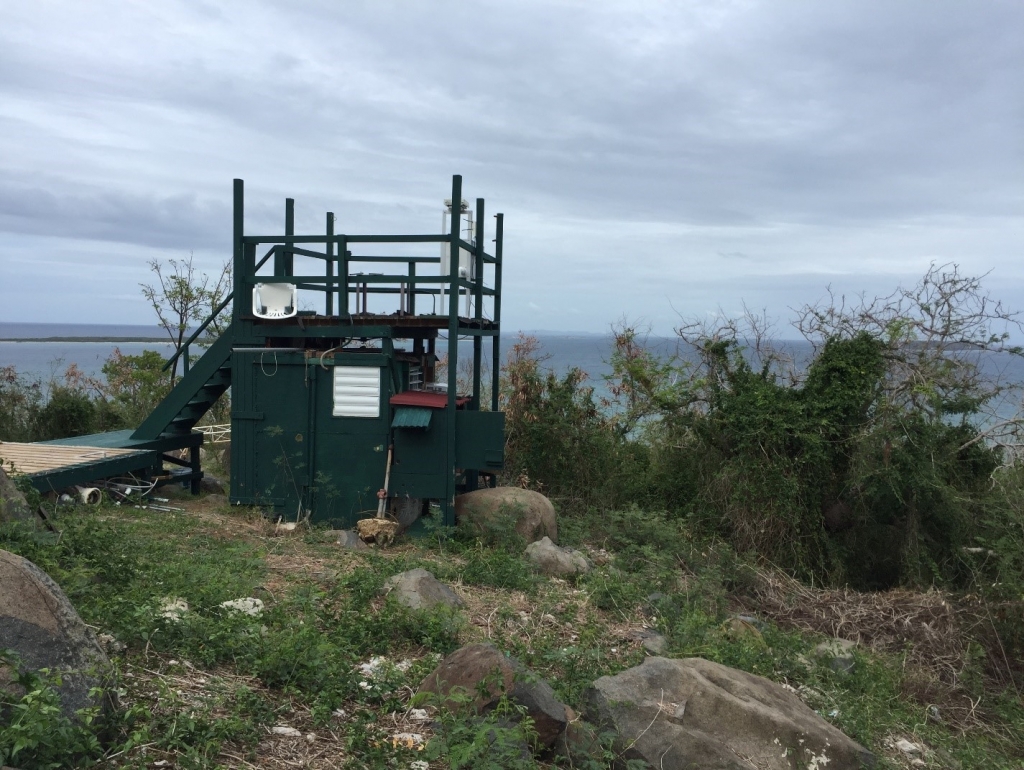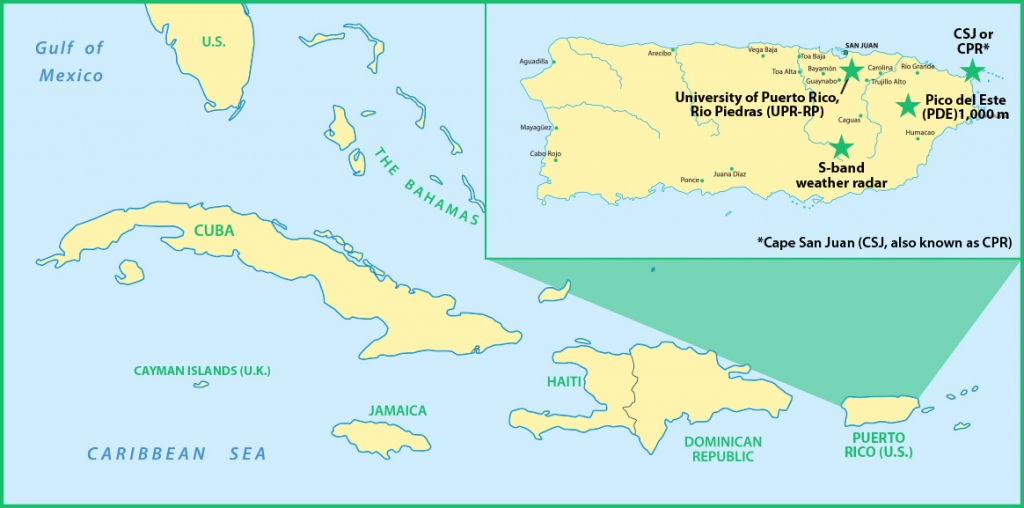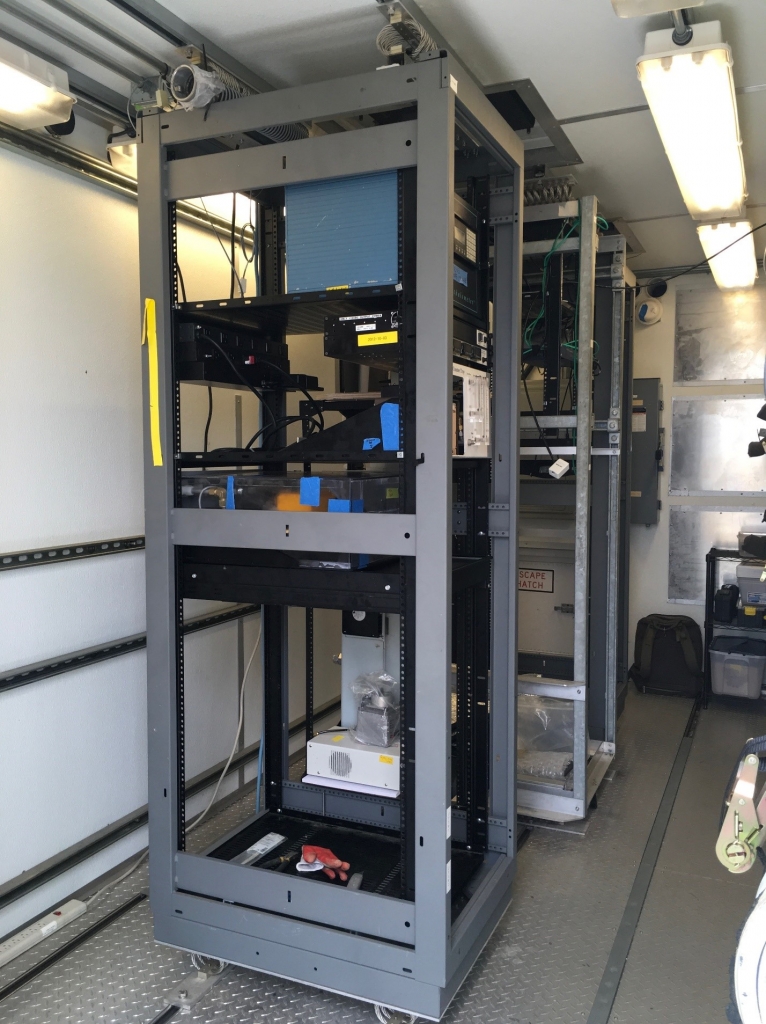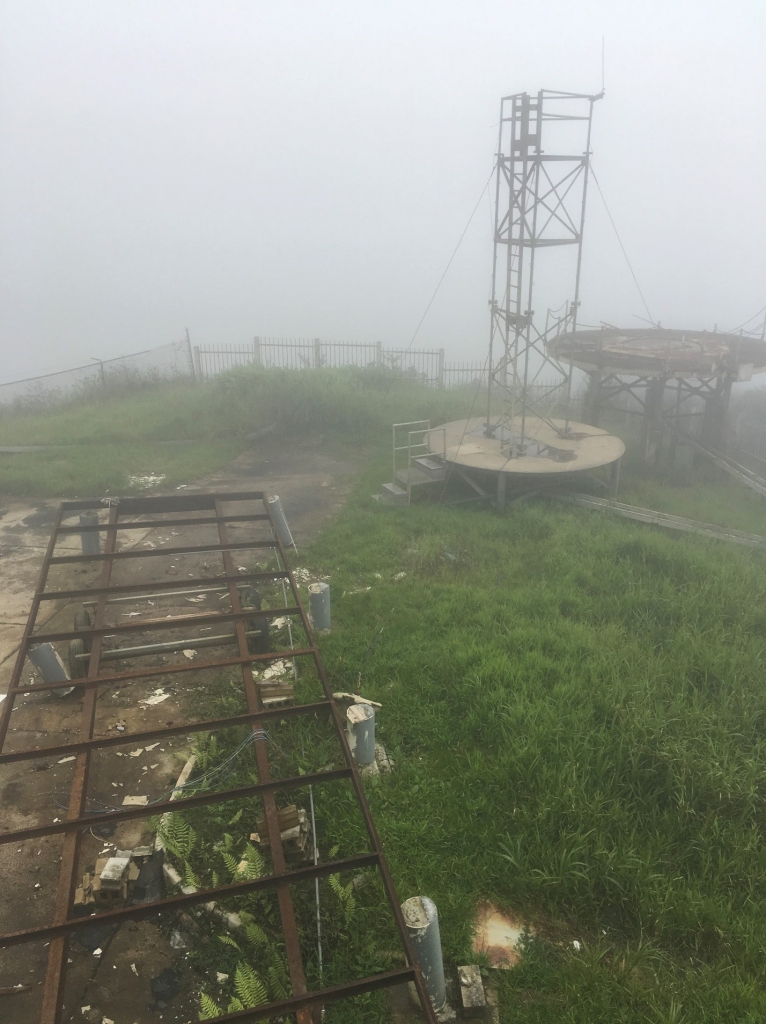A ready-made structure and other gear will restore lost datastreams

Last year, just after 6 in the morning on September 20, Hurricane Maria first hit land in Puerto Rico, packing 115 mph winds and heavy rain. The storm slashed across the island from south to north like a buzz saw, knocking out power lines, roads, water utilities, sewage treatment plants, and cell phone service.
Counting damages to the U.S. Virgin Islands, the cost of the 2017 storm has reached $90 billion. The hurricane is now called the worst natural disaster to ever hit Puerto Rico—so devastating that “Maria” has since been retired from the rotating naming list for Atlantic hurricanes.
In the Puerto Rican capital of San Juan that September morning, University of Puerto Rico-Rio Piedras atmospheric scientist Olga Mayol-Bracero huddled at home with her family.
“There was not much you could do,” she says. “Just secure your things and pray.”
In the months since Maria hit, however, funding, gear, and expert assistance rolled in to help Mayol-Bracero rebuild two observatories she and her students had overseen for more than a decade.
Among those providing help was the U.S. Department of Energy’s Atmospheric Radiation Measurement (ARM) user facility, which loaned the Puerto Rican science team a modified 20-foot SeaTainer converted to a Mobile Aerosol Observing System (MAOS). The structure is on loan for two years.
“The container is a great help,” says Mayol-Bracero, who applied for it through an ARM field campaign request. “It allows us to start (measurements) right away. This is very valuable to keep our research active.”
The renewable field campaign was granted for long-term aerosol measurements in Puerto Rico and runs from June 2018 to June 2020.
‘Just a Floor’

One of the university sites is tucked along the northeastern coast of Puerto Rico at Cape San Juan, where the on-loan ARM SeaTainer is being put in place now.
The location, within the marine boundary layer, is ideal for taking continuous measurements of aerosol optical, chemical, and microphysical properties in a region affected by—among other things—dust from the distant Sahara.
Two of the site’s three main structures were destroyed, says Mayol-Bracero. A third structure, for measuring aerosols (tiny particles in the air), was stripped to a shell.
In all, she says, “about 75 percent” of the coastal site disappeared in the storm’s fury.
The other observatory, 10 miles west of the lowland site and 3,000 feet higher, is what she calls her “cloud site” at Pico del Este. Before Maria, instruments in a 40-foot trailer on concrete pillars and lashed to the ground gathered data on cloud aerosols. After the storm, says Mayol-Bracero, “just a floor” was left.
The day before the hurricane, she and a few students were at the cloud site, moving instruments inside the trailer, battening down doors and windows, and checking on guy wires installed that June to stormproof the observatory.
“We secured the station very well,” says Mayol-Bracero. “We never thought it was going to be gone completely.”
For Science, Help Arrives

In the months after Maria, the U.S. Department of Energy was joined by other federal entities that stepped in to help restore the wrecked observatories: the National Oceanic and Atmospheric Administration (NOAA), a Mayol-Bracero research collaborator since 2004; the National Science Foundation; and NASA, including the agency’s Aerosol Robotic Network (AERONET) project, which has teamed with Mayol-Bracero since 2004.
Also stepping up to renew Mayol-Bracero’s atmospheric science infrastructure were universities from Germany, France, Chile, Mexico, and the United States.
Private industry contributed as well. Colorado-based Droplet Measurement Technologies donated a high-dollar Wideband Integrated Bioaerosol Sensor, which provides data on naturally occurring bioaerosols, including bacteria, molds, and pollen.
Some of the gear loaned or given to Mayol-Bracero’s team—such as four sensors from Carnegie Mellon University—is for a project it has underway to measure the air quality effects of power generators following the storm. Maria knocked out power for months.
Says Mayol-Bracero of all the scientific help: “It’s a good feeling to know people care, and want to see you on your feet and working again.”
‘Repaired and Functioning’

At Cape San Juan one afternoon in late June, John Ogren, a retired atmospheric scientist and former chief of the aerosol group at NOAA, watched workers excavate a site for foundation pillars. They will anchor the ARM SeaTainer and one other, a backup that is on loan from NASA.
The ARM structure most recently contained advanced chemistry instrumentation. Before then, it had housed instruments during ARM field campaigns in Brazil, New Mexico, and the Azores.
“It’s been well used” and is “repaired and functioning,” says Stephen Springston, an atmospheric chemist at Brookhaven National Laboratory. “I take personal pride in the structure. I was there from day one getting it designed and built. It feels like my baby.”
The ARM structure arrived at Cape San Juan with lights, air conditioning, instrument racks, computers, monitors, an air-sampling inlet, and a rail-protected roof. ARM also loaned one refurbished cloud condensation nuclei (CCN) particle counter; it characterizes how particles interact with clouds.
Not every aerosol helps form clouds. The CCN instrument identifies airborne particles that are favored to do so because of their size or chemistry.
It’s a first for the Cape San Juan site, says Ogren, and scientifically “a very welcome addition.”
Ogren was central to the NOAA-Puerto Rico collaboration that began in 2004. He is also deeply familiar with the kind of structure he volunteered to help set up during a 10-day personal trip: His NOAA group built the first ARM Aerosol Observing System.
An ARM technical team based at Los Alamos National Laboratory got the aerosol inlet running in July.
Ogren will be back in Puerto Rico in August, when he and Mayol-Bracero turn their attention to the cloud observatory at Pico del Este.
“In the cloud forest station, we lost everything—everything,” says Mayol-Bracero.
Still, she estimates that measurements will flow from the Cape San Juan observatory in July or August, and from Pico del Este in September or October.
‘Interesting Science Perfectly Aligned With ARM Objectives’

Hurricane Maria brought a lesson with it, says Mayol-Bracero: “We learned how vulnerable we were,” both as an island and as scientists who depend on outdoor infrastructure.
However, the storm also brought new attention to a pair of atmospheric observatories uniquely positioned to add scientific value.
“The two sites that Olga has here offer a lot of potential for ARM science,” including the potential to host field campaigns, says Ogren.
He calls them “a linked pair of sites” that represent the continuum of cloud formation. Some of the particles swept into the air at the coastal site—from sea spray, African dust, and airborne remnants of distant fires—reappear as cloud formation particles at the mountain site 10 miles upwind.
Such linked sites “are not unique,” says Ogren, “but certainly in this part of the world they are.”
The Puerto Rico observatories, he adds, “offer interesting science perfectly aligned with ARM objectives. But we’re also helping fellow Americans get back on their feet.”
# # #The ARM Climate Research Facility is a DOE Office of Science user facility. The ARM Facility is operated by nine DOE national laboratories.

